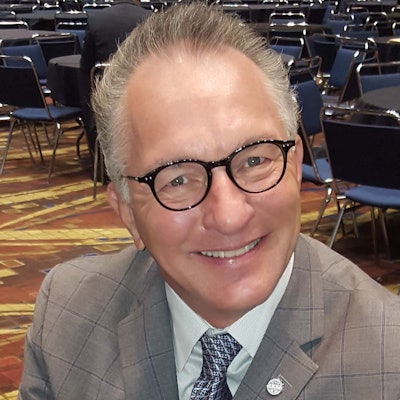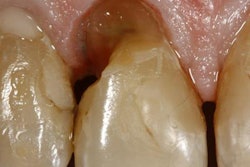
DrBicuspid.com is pleased to present the next installment of Leaders in Dentistry, a series of interviews with researchers, practitioners, and opinion leaders who are influencing the practice of dentistry.
Steven Daniel, DDS, is president of the American Academy of Periodontology (AAP). He currently maintains a private practice in Murfreesboro, TN, with his wife and partner, Joanne Gaydos-Daniel, DDS.
DrBicuspid.com: The AAP is scheduled to publish the findings from the World Workshop on the Classification of Periodontal and Peri-implant Diseases and Conditions, which the academy hosted last fall. What can you tell us about the event and its proceedings?
 Steven Daniel, DDS, is the president of the American Academy of Periodontology. Image courtesy of the AAP.
Steven Daniel, DDS, is the president of the American Academy of Periodontology. Image courtesy of the AAP.Dr. Daniel: The workshop, held last November in Chicago, was the first in nearly 20 years. We cohosted it with the European Federation of Periodontology and brought together 120 periodontology researchers and thought leaders from around the world.
Participants conducted literature reviews, established case definitions, and deliberated diagnostic considerations in a number of clinical areas.
Such as?
Periodontal health and gingival diseases and conditions, periodontitis, developmental and acquired conditions and periodontal manifestations of systemic conditions, and peri-implant diseases and conditions.
What's interesting is that peri-implant disease wasn't a factor back in 1999 when the academy last conducted this workshop. So, the idea is to take all this information and build in a translational element -- we wanted to make this material relevant, especially the peri-implantitis information, for our clinicians who are dealing with this on a day-to-day basis.
Is this a new way of classifying periodontal disease?
What this offers is a redefinition and modernization of how we classify disease, allowing for what research has found in the last two decades about disease progression, risk factors, and how disease may affect patients individually.
In addition to determining what characterizes periodontal and peri-implant disease, the classification outlines gingival health and mucogingival conditions. It is our intention that professionals in all corners of dentistry have access to this content and use it to inform their decision-making.
We (the AAP) has charged a committee with ensuring that the rollout of the proceedings is smooth and that we're able to answer any questions that arise from other periodontists, general dentists, educators, and third-party carriers.
When will this material be made public?
The proceedings will be published in the May 2018 issue of the Journal of Periodontology. They will also be copublished in the Journal of Clinical Periodontology.
The AAP also published guidelines on cone-beam CT (CBCT) use in 2017, and you have guidelines on laser use coming out soon?
Yes, we did one on CBCT technology and another one on the use of lasers in dental and periodontal treatment.
The idea behind these guidelines is that our members are using these and other technologies that don't yet have a critical mass of evidence that guide day-to-day clinical use. As our members want to use these technologies, they are seeking some guidance because they want to use it in the most effective, safest way for their patients.
We gathered a group of experts on CBCT and lasers, and each group provides reports that are designed to bridge knowledge gaps on the use of these tools. The reports provide summaries of existing evidence and useful expert interpretations. We published the CBCT guidelines in the Journal of Periodontology in October 2017. I should note that these guidelines are available for everybody on joponline.org, and the material is open-access -- you don't have to be a member to review it. The report on lasers will be released this summer (2018).
Let's talk about the CBCT guidelines. What are the concerns, if any, and what are the advantages of this technology?
Periodontists should use good radiation hygiene, as it were, but beyond that I don't know that there are any concerns about using CBCT technology. Dentists are very careful about how they use standard or panoramic radiographs -- that's just part of good practice.
“One of the first things we did when we went into practice together was invest in a CBCT machine.”
Here, I can speak from my own experience about the advantages of CBCT technology. My wife is also a periodontist, and she and I have been practicing together for almost seven years. One of the first things we did when we went into practice together was invest in a CBCT machine.
While we purchased it primarily to help with treatment planning for implants, it also helps with patient case presentation and creation of surgical guides. But what I didn't realize was how useful it was.
For instance, in diagnosing an endodontic issue, this technology gives the practitioner a much better idea of the extent of the damage caused by periodontal disease. This, in turn, makes it easier to look a patient in the eye and say, "As much as I would like to help you keep this tooth, we need to seek an alternative."
That's an important point in terms of case acceptance. If patients can see what you are talking about, they may better understand the need for treatment.
I do a lot of periodontal plastic surgery in my office. When you take a photograph, put it on the screen, and show patients what it looks like in one part of the mouth, they can see the differences in bone level. Most of us are visual learners, and I'm convinced that if you can show people that, it allows them to own what is there. It is as objective as it can be.



















